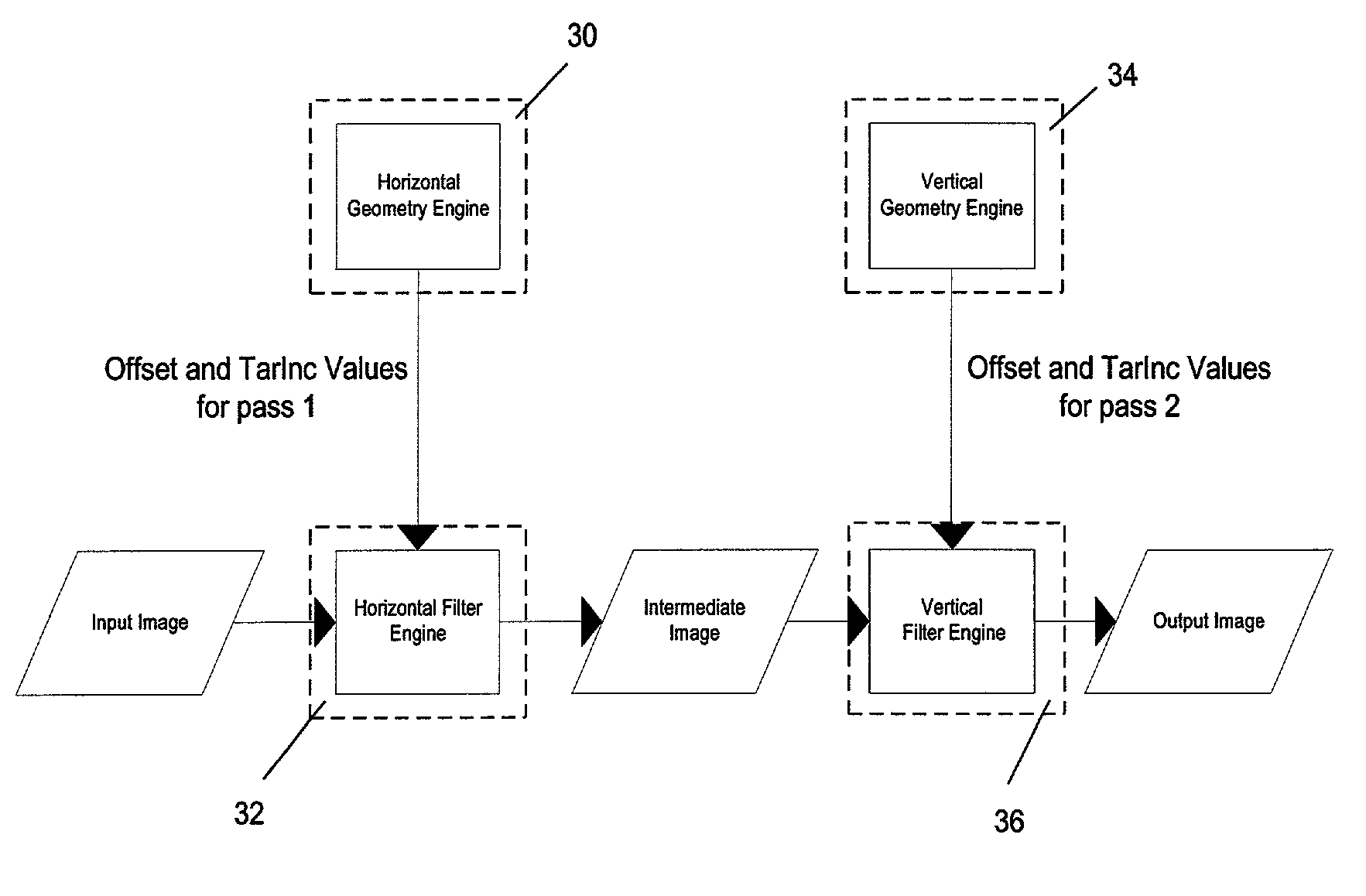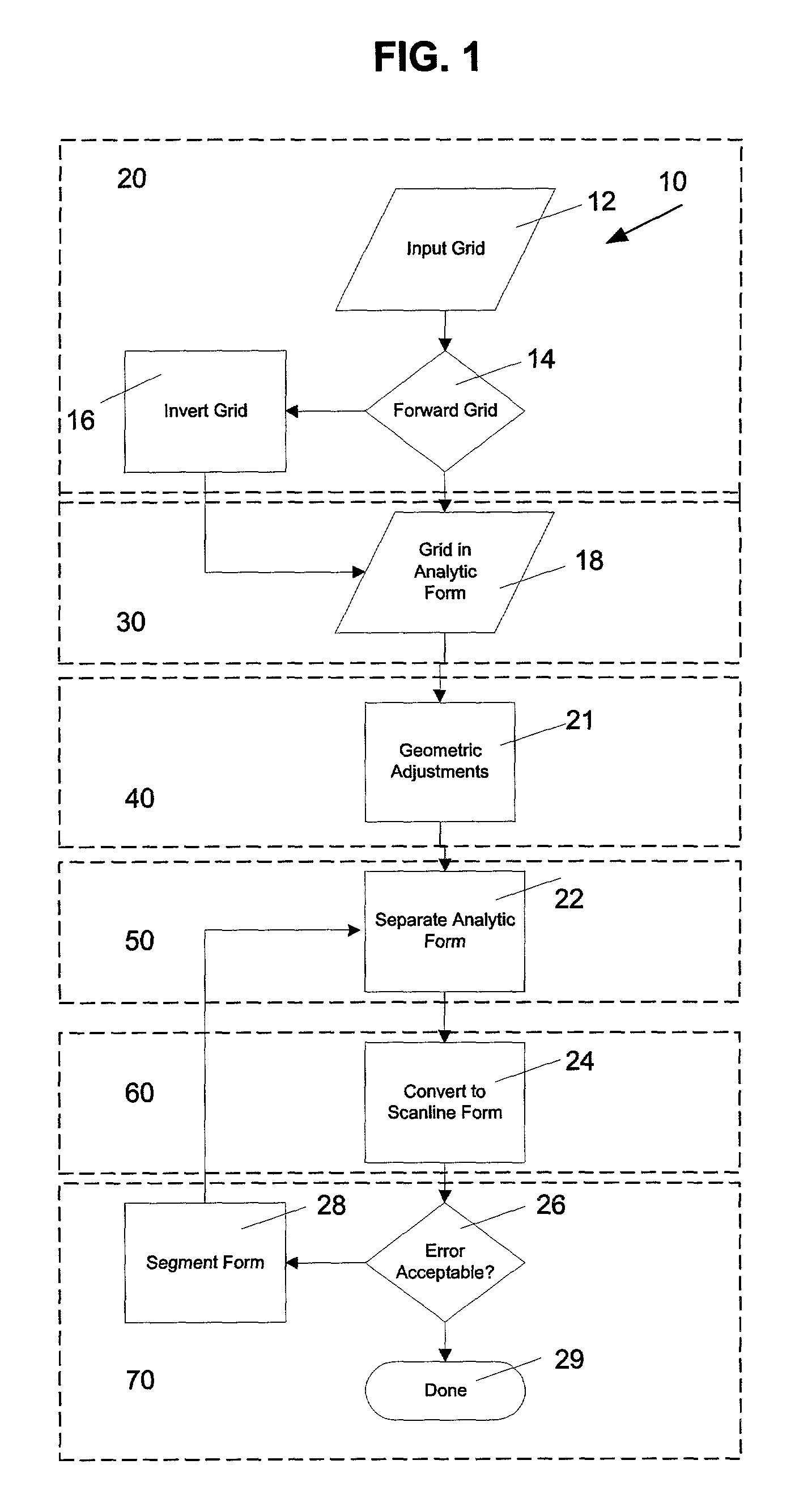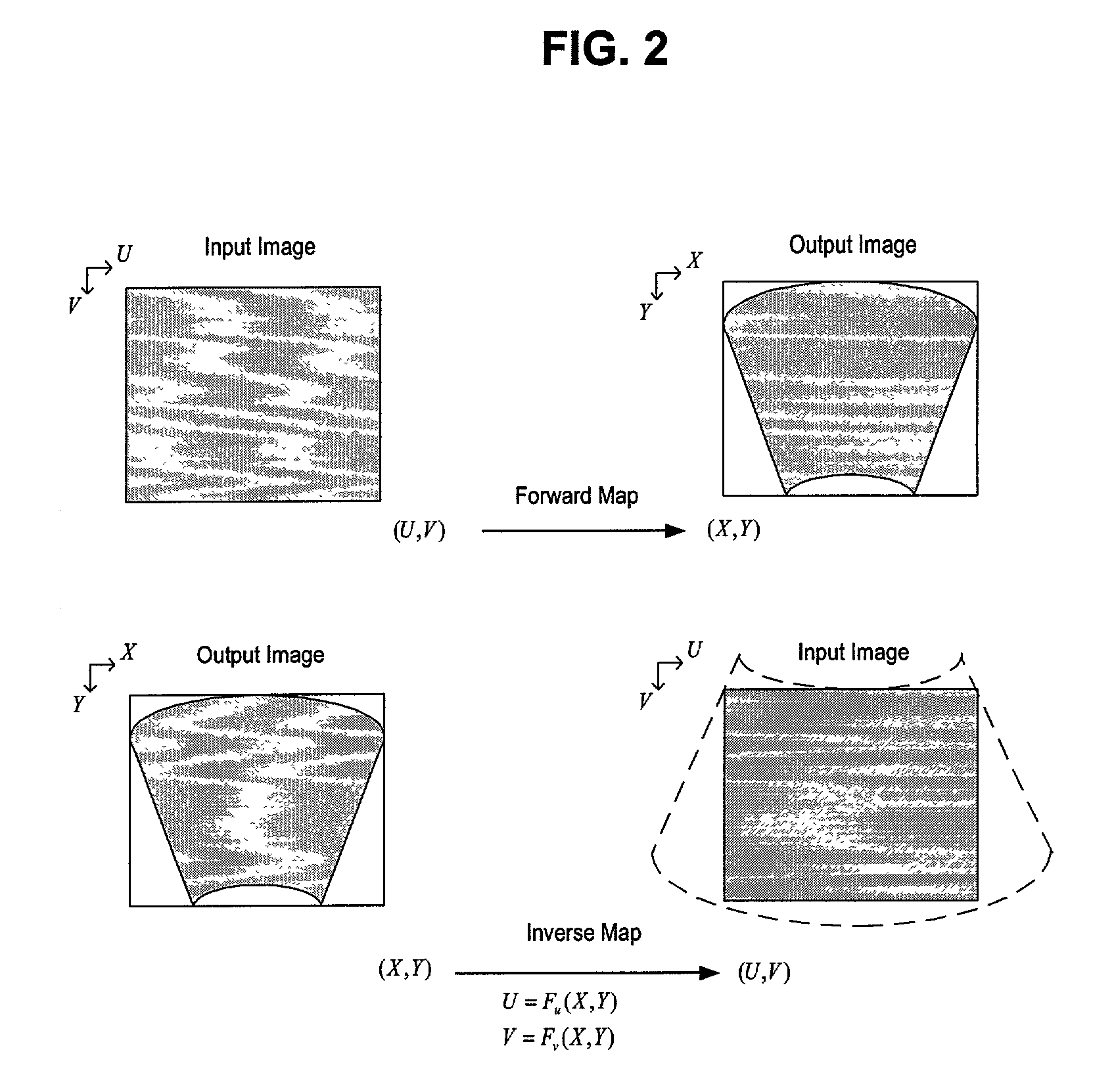Method and system for processing a non-linear two dimensional spatial transformation
a two-dimensional spatial transformation and processing method technology, applied in image enhancement, instruments, computing, etc., can solve the problems of significant memory requirements, limitation of the complexity of the transformation, and inacceptable video processing of image artifacts created using this simplified filtering
- Summary
- Abstract
- Description
- Claims
- Application Information
AI Technical Summary
Benefits of technology
Problems solved by technology
Method used
Image
Examples
Embodiment Construction
[0045]FIG. 1 is a detailed flowchart diagram that illustrates the image transformation method 10 used to achieve transformation of an input image to an output image according to a non-linear 2D spatial transformation, according to the present invention. The six main stages of the method are illustrated in FIG. 1, namely a inverse transformation stage 20, an analytical stage 30, a geometric transformation stage 40, a separation stage 50, a conversion stage 60, and a error check stage 70. These stages will be discussed in further detail throughout the following disclosure.
[0046]The image transformation method 10 of the present invention provides a separable two-pass transform for processing an image warp in separate horizontal and vertical passes, allowing the 2D spatial transform to be defined as two 1D processes. Accordingly, any system where a 2D spatial transformation needs to be applied can make use of image transformation method 10. Image transformation method 10 can be used in ...
PUM
 Login to View More
Login to View More Abstract
Description
Claims
Application Information
 Login to View More
Login to View More - R&D
- Intellectual Property
- Life Sciences
- Materials
- Tech Scout
- Unparalleled Data Quality
- Higher Quality Content
- 60% Fewer Hallucinations
Browse by: Latest US Patents, China's latest patents, Technical Efficacy Thesaurus, Application Domain, Technology Topic, Popular Technical Reports.
© 2025 PatSnap. All rights reserved.Legal|Privacy policy|Modern Slavery Act Transparency Statement|Sitemap|About US| Contact US: help@patsnap.com



